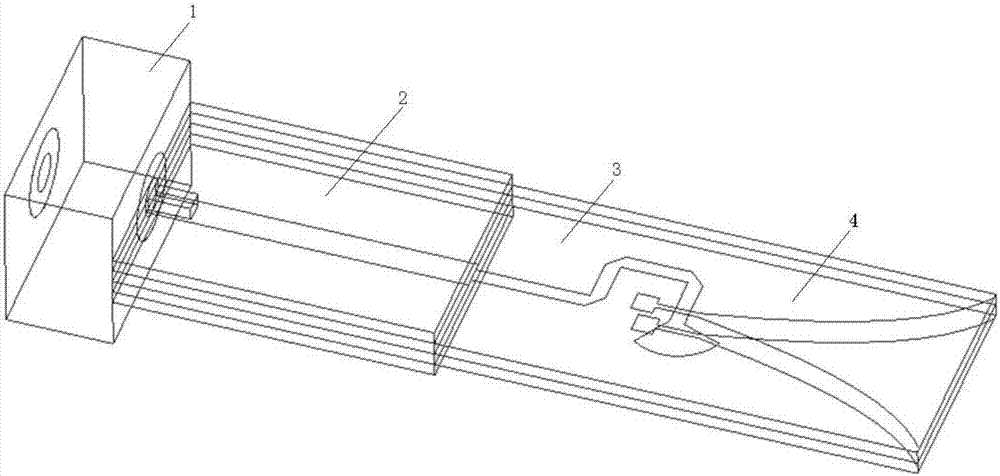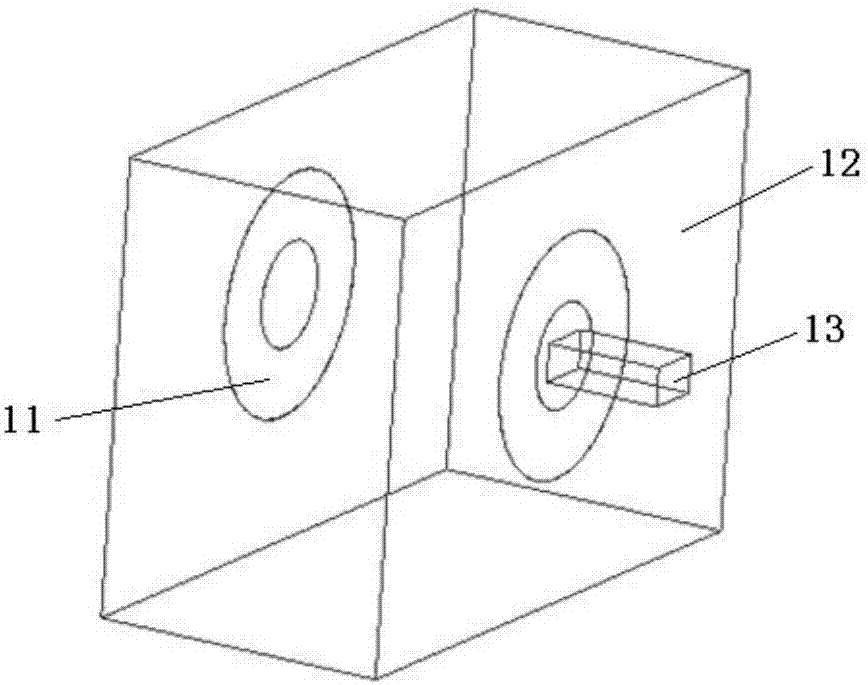Coaxial feeding millimeter wave antenna based on thick and thin strip line conversion
A millimeter-wave antenna and coaxial feeding technology, which is applied to the connection of antenna grounding switch structures, circuits, electrical components, etc., can solve the problems of performance deterioration, millimeter-thin substrate stripline antenna feeding structure cannot be realized in engineering, etc. To achieve the effect of reducing energy leakage
- Summary
- Abstract
- Description
- Claims
- Application Information
AI Technical Summary
Problems solved by technology
Method used
Image
Examples
Embodiment Construction
[0018] It is easy to understand that, according to the technical solution of the present invention, without changing the essence of the present invention, those skilled in the art can imagine a variety of coaxial feeding millimeter-wave antennas based on thick-thin stripline conversion in the present invention. implementation. Therefore, the following specific embodiments and drawings are only exemplary descriptions of the technical solution of the present invention, and should not be regarded as the entirety of the present invention or as a limitation or limitation on the technical solution of the present invention.
[0019] Such as Figure 1-5 As shown, a coaxial feed millimeter-wave antenna based on thick-thin stripline conversion, the antenna is composed of four sections, from back to front are coaxial connector 1, thick substrate stripline 2, thin substrate strip stripline 3 and thin substrate stripline antenna 4. The coaxial connector 1 is composed of a wall penetrator...
PUM
 Login to View More
Login to View More Abstract
Description
Claims
Application Information
 Login to View More
Login to View More - R&D
- Intellectual Property
- Life Sciences
- Materials
- Tech Scout
- Unparalleled Data Quality
- Higher Quality Content
- 60% Fewer Hallucinations
Browse by: Latest US Patents, China's latest patents, Technical Efficacy Thesaurus, Application Domain, Technology Topic, Popular Technical Reports.
© 2025 PatSnap. All rights reserved.Legal|Privacy policy|Modern Slavery Act Transparency Statement|Sitemap|About US| Contact US: help@patsnap.com



